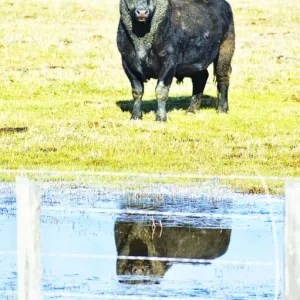Baker County Livestock Association to discuss effort to reduce bacteria levels in Powder River basin
Published 9:54 am Tuesday, April 8, 2025
A representative from the Oregon Department of Agriculture is scheduled to attend the April 17 meeting of the Baker County Livestock Association to talk about the effort to reduce levels of bacteria in rivers and streams in the Powder River basin.
The meeting will start at 6 p.m. at the OSU Extension Office, 2600 East St.
The public is invited.
The Oregon Department of Environmental Quality in 2024 approved what’s known as a TMDL plan — Total Maximum Daily Load — for the Powder basin. The process, outlined in the federal Clean Water Act, identifies streams or other bodies of water that exceed federal standards for certain pollutants.
The Powder River Basin TMDL focuses on one pollutant — fecal bacteria that could potentially sicken people or animals that are in contact with water in streams in the basin through recreation such as swimming or fishing.
That basin includes most of Baker County and a small part of southern Union County.
Sections of more than a dozen streams in the Powder River Basin exceed the federal standard for bacteria under the Clean Water Act, according to DEQ data collected over the past 25 years or so.
These include the Powder and Burnt Rivers, the North Powder River, Eagle Creek, Dixie Creek, Pine Creek (in eastern Baker County), as well as Unity, Thief Valley, Phillips and Brownlee reservoirs.
DEQ contends that “source assessment for the Powder Basin TMDL found that the primary pathways for bacteria to enter waterways are through erosion and runoff from pastures, direct deposition of livestock manure, and transport and delivery of sediment and organic matter containing bacteria.”
Local officials, including Doni Bruland, Baker County’s natural resources director, had asked DEQ to delay a decision on the TMDL. Bruland and others have noted that DEQ’s data don’t include testing water samples for DNA, which could determine the relative contributions of livestock and wildlife, or potentially human sources such as sewage, to bacterial levels.
Although the TMDL approval didn’t have an immediate effect on ranching or farming, local officials have expressed concern that efforts to reduce bacteria levels could result in restrictions on cattle grazing.






